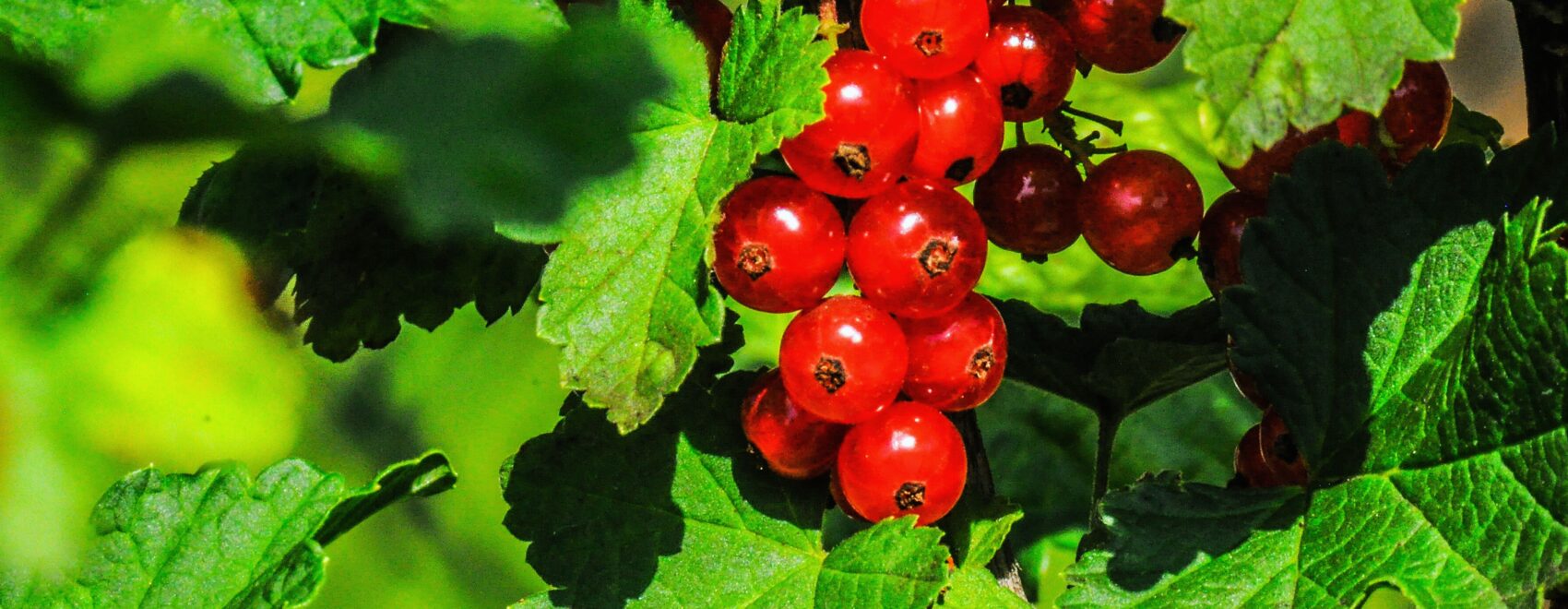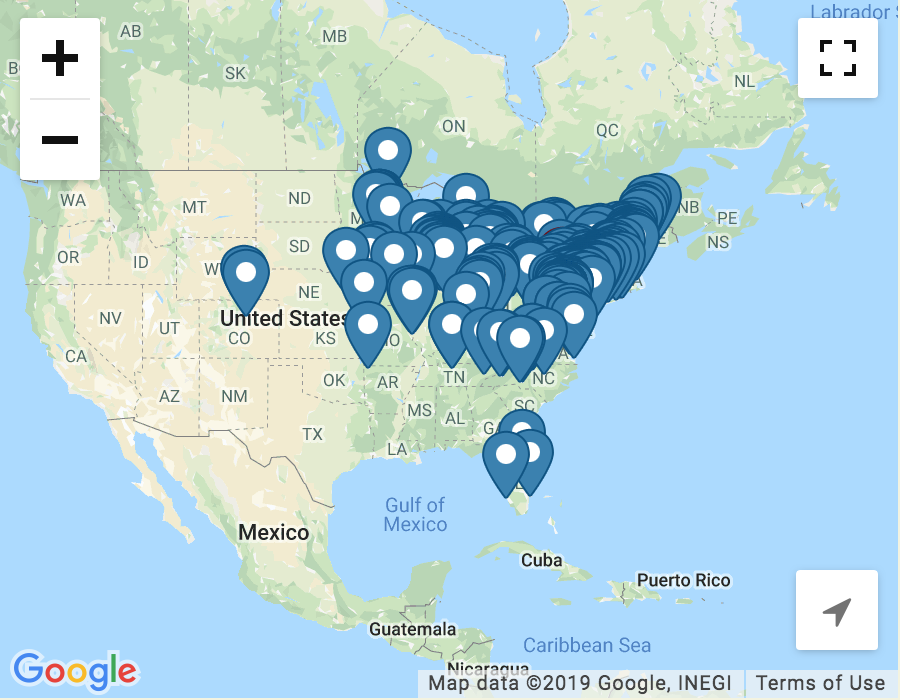Growing berries in containers might not seem like an obvious option when you consider growing these small soft fruits. Maybe that’s because we picture big swathes of fruits-bearing plants in pick-your-own strawberry fields and blueberry farms and all the space they require. If you don’t have a field but you do have some space in a condo’s back yard, a small patio or even a balcony, a couple of small or large containers (depending on what you’re growing) will keep you supplied with your favorite juicy berries.
Let’s dive into the berry growing considerations—from the best berry types to grow in containers and preferred growing conditions to types of containers and other pro tips—so you can get the most out of your berry bounty.
Which Berries Are Good for Containers?
Not all berries are created equal, at least not when it comes to growing them in containers. That might be due to the size of the bush and their root system’s appropriateness for non-ground living. Strawberries are most suitable for containers and when talking about berry bushes such as blueberries, the shorter, more compact varieties are a good way to go.
Here are the top picks for container-friendly berries:
Strawberries: These are perhaps the easiest berries to grow in containers. They don’t need deep soil, and they adapt well to hanging baskets, strawberry pots, or window boxes. Look for strawberries that are everbearing—i.e. bear fruit in spring and then again in fall. Day-neutral varieties are a bit of an improvement over everbearing in that they produce fruits continually spring through fall.
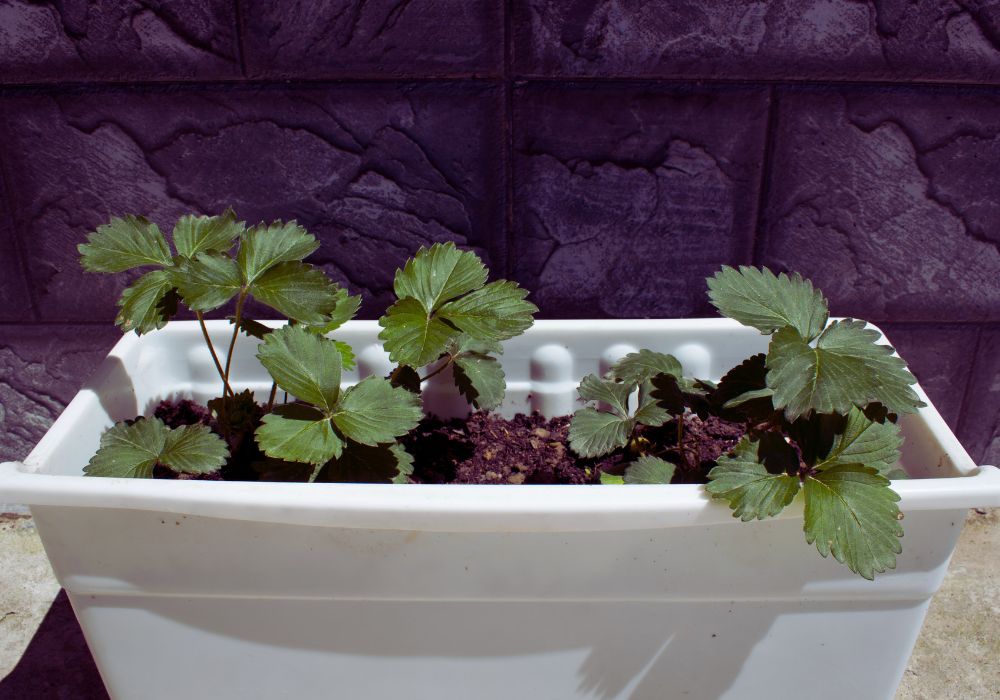
Blueberries: Blueberries are an excellent choice for containers because there is such variety within the group. With a large enough container, compact or dwarf varieties will grow quite well. Keep in mind, however, that they will need more frequent watering and possibly more attention to fertilizing than blueberries grown in the ground.
Another thing to note about blueberries is that many varieties require cross-fertilization, meaning you need two berry bushes to produce fruits. ‘Sunshine Blue’ is an appropriate container blueberry variety because it is self-fertile, meaning you need only one bush to produce berries. It also has a shallow root system, making it easier to grow in containers. Another popular self-pollinating variety is ‘Jelly Bean’, a 1-2 ft. tall variety with a mounded habit and a sweet jelly flavor. Other appropriate varieties for which you will need two bushes include ‘Top Hat’ (just 18 in. tall!) and ‘Pink Lemonade’.

Raspberries: Wait, raspberries with all their sticky brambles are appropriate for containers? Well, not those raspberries. Dwarf varieties that you can put in a pot do exist—and some are even thornless! Varieties to look for include ‘Autumn Bliss’ at about 5 ft. tall, ‘Raspberry Shortcake’ at about 3 ft. tall (and it’s thornless!), and ‘Ruby Beauty’ at 3 ft. tall and also thornless. ‘Autumn Bliss would need a support, but the others are compact enough to not need trellising.
Blackberries: Ditto for blackberries. Dwarf and thornless blackberry varieties are excellent items for containers. ‘Baby Cakes’ is one example, having a rounded 3-4 ft. tall habit and does not require trellising.
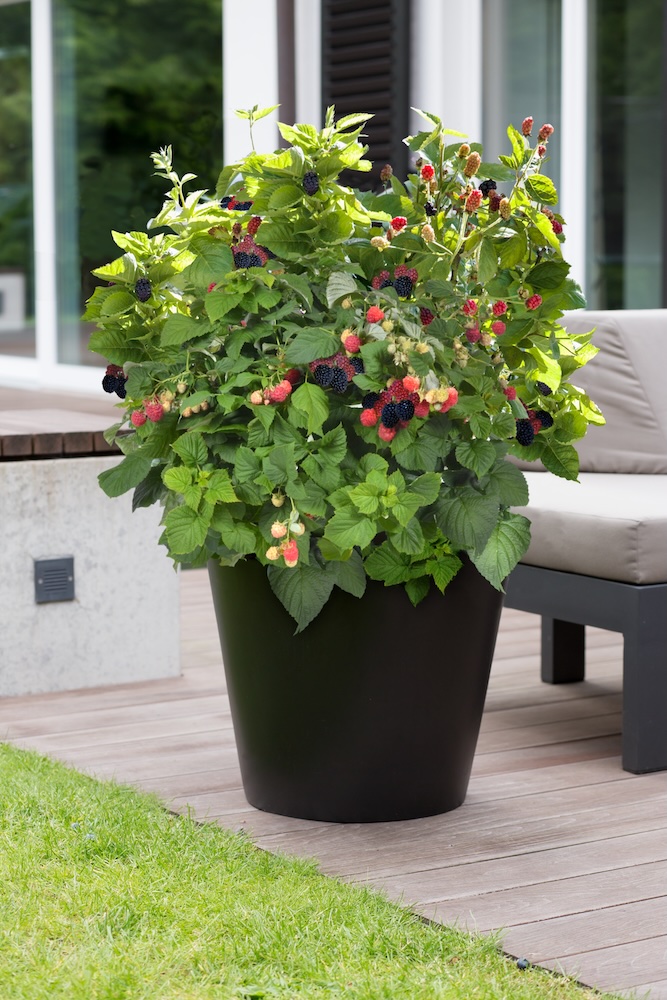
Currants: These lesser-known small fruits grow on bushes that are totally appropriate for pots. Not only do they have shallow root systems, but they are also relatively small at around 3-4 ft. tall.
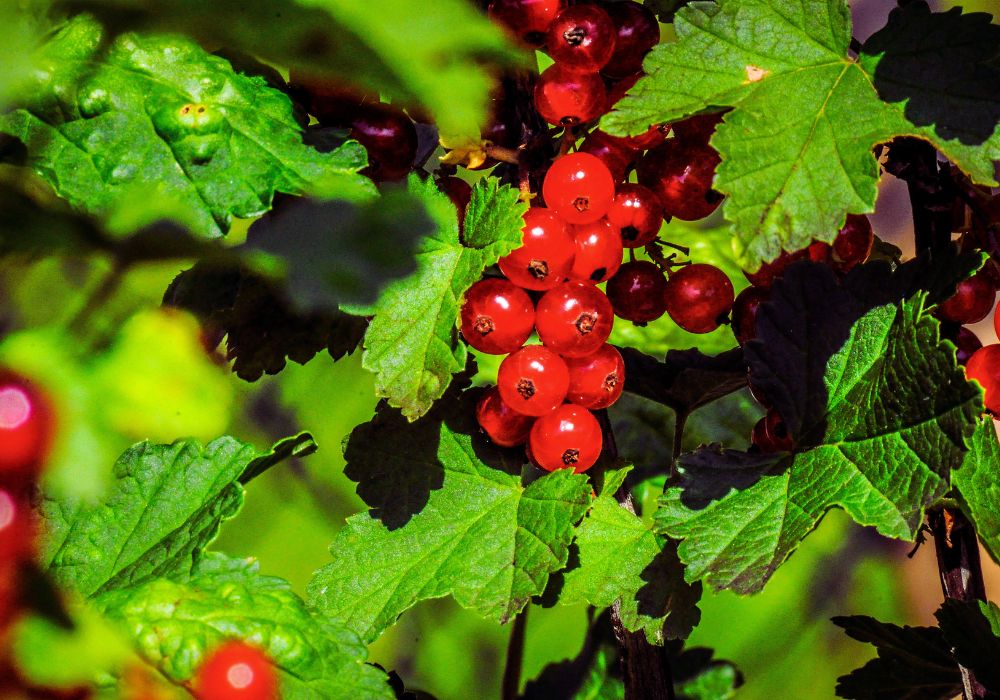
Choosing the Right Container
For all of the above except for the strawberries, the container you choose is an important factor in your success with soft fruits. Strawberries can grow in just about any container—a small plastic or ceramic pot, a hanging basket, a fabric or fiber pot, a coffee can, an old shoe, you name it. As long as it has drainage holes, it’ll work.
The larger berry bushes require a much bigger container to hold a larger root system and to anchor the taller, woodier plant. The rule of thumb is a container that is at least 16-20 in. deep and wide. A holding capacity of at least 5 gallons is required for the smaller varieties mentioned above, and the larger bushes would do well with a larger volume that a half whiskey barrel affords.
As for its construction, your container can be of any material but will definitely need drainage. The ideal material would be one that provides some insulation for the roots during cold weather. The ground usually provides insulation against freezing temperatures, so having roots in a pot above ground makes them more vulnerable to extremely cold conditions. Your future self will appreciate you outfitting these larger containers with some ability to move them—a set of wheels, for instance—so you can move them into a protected area should you need to in colder climates.
Soil Considerations for Berries
As with anything you grow in a pot, the soil goes a long way in the success of your potted berries. Here are some tips to keep in mind when it comes to your berry plant’s root zone:
Pay attention to drainage. This is more than just having holes in your pots. Use a high-quality potting mix that allows for just the right amount of moisture retention but without holding too much water. A product such as Organic Mechanics 110 Blend provides just the perfect balance of moisture retention and aeration, thanks to the coir, perlite, biochar, and compost it contains. These plus earthworm castings, bone char, azomite, zeolite, alfalfa meal and kelp meal help to give you better yields, tastier flavor, and a bigger and better harvest.
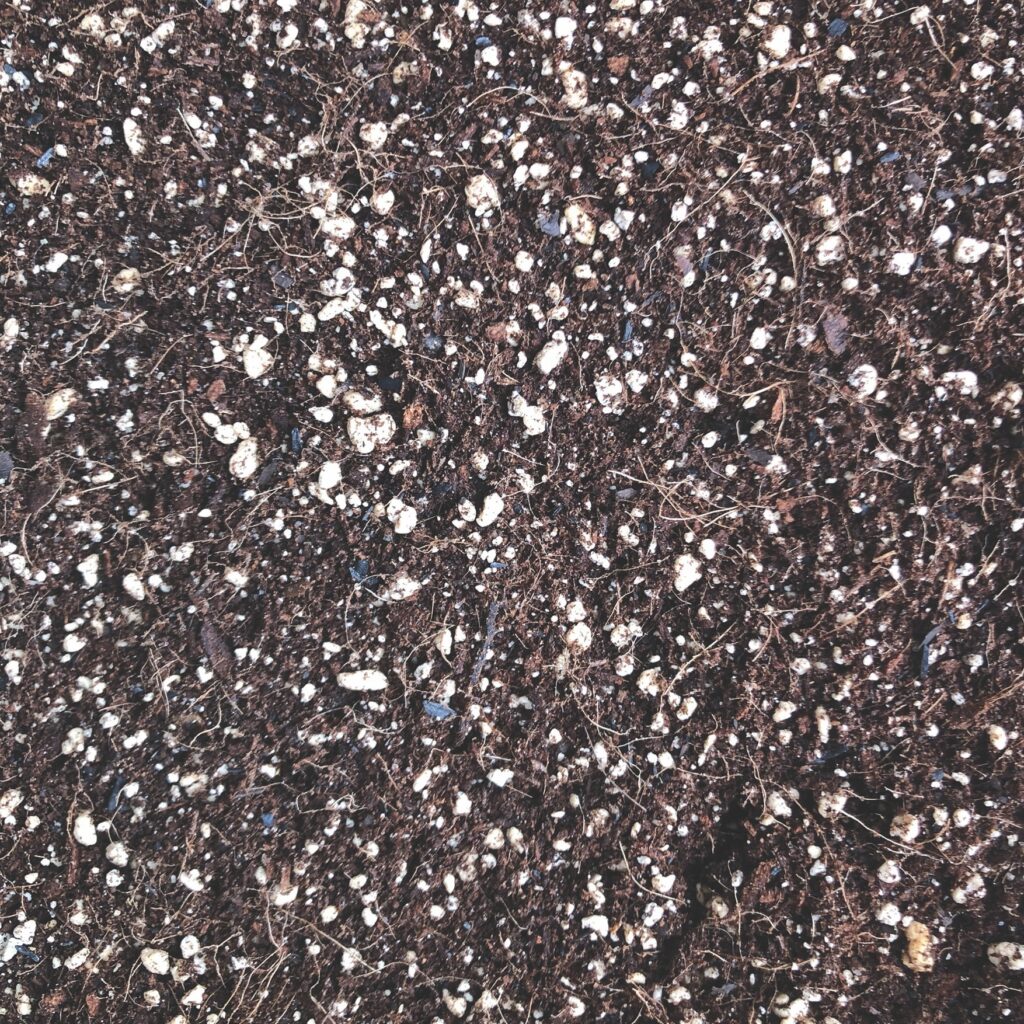
Keep in mind that blueberries need acidic soil with a pH of 4.5–5.5. Either purchase a soil mix formulated for acid-loving plants (an azalea mix will do), or add in some Aluminum Sulfate to the 110 Blend to lower the pH. Aluminum Sulfate is available at almost any garden center in small bags and is easy to apply. Follow the directions on the bag to know how much to apply. You can even use this product to turn Hydrangea flowers from pink to blue!
Mulching your containers is a great idea, and one we tend to ignore when growing in pots. A layer of mulch helps retain moisture, suppress weeds, and keep the roots cool. You might also consider using Pure Rice Hulls as mulch which has the added bonus of controlling fungus gnats.
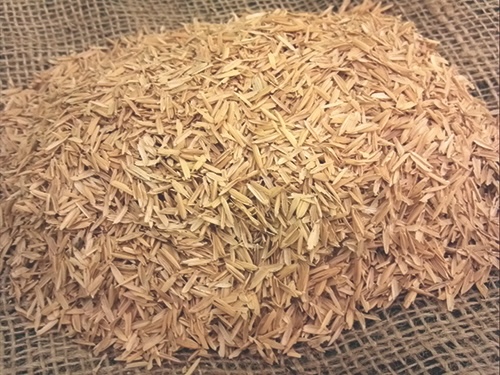
General Growing Tips for Berries
Now that you have the berries you want, the containers most suited them and the soil that’ll help them thrive, let’s go over the nuts and bolts of their general needs:
- Sunlight. Most berries need at least 6–8 hours of direct sunlight per day. Place your containers in the sunniest spot you can find.
- Watering. Keep in mind that containers dry out faster than garden beds. Keep the soil consistently moist but not soggy. This is especially true during fruiting. Use your finger to check moisture, rather than just assuming they need or don’t need water.
- Fertilizing. As we mentioned above, nutrients in containers deplete more quickly than in planting beds. Feed your plants with a balanced, slow-release fertilizer. Use a fertilizer designed for acid-loving plants on your blueberries.
- Pollination. Most berries are self-pollinating, but some berries require two separate plants for pollination and subsequent fruit production. Be sure to know which type of pollination your berry bush requires, as it may mean you need multiple bushes.
- Overwintering. In colder growing regions, these containers, and hence the bush’s roots, will be exposed to freezing temperatures. If so, move them to a sheltered spot, mulch heavily, or even wrap the containers in burlap or insulation to protect roots during winter.
Growing berries in containers isn’t really that much different from growing anything else you might be producing in pots. And how wonderful would it be to have super-fresh blueberries to top your breakfast or warm strawberries in your fruit smoothie? You’re going to love the convenience of harvesting at home, right when you need them!

